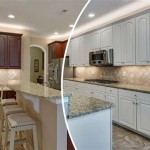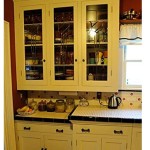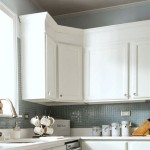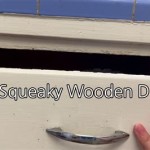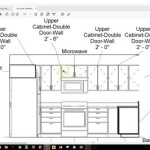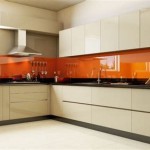The Enduring Appeal of White Kitchen Cabinets
White kitchen cabinets have remained a consistently popular choice for homeowners and designers alike, transcending trends and offering a timeless aesthetic. Their versatility, ability to brighten spaces, and perceived cleanliness contribute to their enduring appeal. This article will explore the key advantages of white kitchen cabinets, discuss the various styles and materials available, and offer practical considerations for maintaining their pristine appearance.
Brightness and Space Enhancement
One of the most significant benefits of white kitchen cabinets is their ability to reflect light effectively. White surfaces inherently reflect a large proportion of the light that strikes them, making a kitchen feel brighter and more spacious. This is particularly beneficial in smaller kitchens or those with limited natural light. The reflected light can also enhance the perceived size of the room, creating an airier and more open atmosphere. In contrast to darker cabinet colors, white cabinets prevent the kitchen from feeling cramped or enclosed.
Furthermore, the brightness imparted by white cabinets can improve the overall ambiance of the kitchen, making it a more inviting and pleasant space to work in. It can also contribute to a more cheerful and uplifting mood, especially during periods of low natural light. The effect is not merely aesthetic; it can also improve visibility, making food preparation and cleaning tasks easier and safer.
The reflective properties of white cabinets also allow for more effective use of artificial lighting. Because the cabinets reflect the light from overhead fixtures and under-cabinet lighting, fewer light fixtures may be needed to achieve a desired level of illumination. This can lead to energy savings and a more efficient lighting design.
Versatility in Design and Style
White kitchen cabinets are remarkably versatile, blending seamlessly with a wide range of design styles. From traditional to contemporary, and from minimalist to farmhouse, white cabinets can adapt to suit a variety of aesthetic preferences. This adaptability makes them a safe and reliable choice, even when tastes evolve over time. The neutrality of white allows for easy incorporation of other design elements, such as colorful backsplashes, countertops, and hardware.
In traditional kitchens, white cabinets can be paired with ornate detailing, such as raised panel doors, intricate moldings, and classic hardware finishes like brushed nickel or antique brass. This combination creates a timeless and elegant look that evokes a sense of history and refinement. The white cabinets provide a clean backdrop for the more elaborate details, preventing the overall design from feeling overwhelming or cluttered.
For contemporary kitchens, white cabinets can be combined with sleek, minimalist designs, such as flat-panel doors, handleless hardware, and clean lines. This creates a modern and sophisticated look that emphasizes simplicity and functionality. The white cabinets provide a neutral canvas for showcasing modern appliances and design elements, such as stainless steel accents and geometric patterns. The lack of ornamentation allows the form and function of the kitchen to take center stage.
In farmhouse kitchens, white cabinets can be paired with rustic elements, such as shiplap walls, butcher block countertops, and vintage-inspired hardware. This combination creates a warm and inviting space that evokes a sense of comfort and nostalgia. The white cabinets provide a clean and bright contrast to the rustic elements, preventing the overall design from feeling too heavy or dated.
Material Options and Considerations
White kitchen cabinets are available in a variety of materials, each with its own advantages and disadvantages in terms of durability, cost, and maintenance. Common materials include solid wood, plywood, medium-density fiberboard (MDF), and thermofoil. The choice of material will depend on budget, aesthetic preferences, and expected usage.
Solid wood cabinets are generally considered to be the most durable and high-quality option. They offer a natural beauty and warmth that is difficult to replicate with other materials. Solid wood cabinets can be made from a variety of wood species, such as maple, oak, cherry, and birch, each with its own unique grain pattern and color. However, solid wood cabinets are also typically the most expensive option and may be susceptible to warping or cracking in humid environments.
Plywood cabinets offer a good balance of durability and affordability. Plywood is a manufactured wood product that is made by layering thin sheets of wood veneer together and bonding them with adhesive. Plywood cabinets are more stable than solid wood cabinets and less prone to warping or cracking. They also provide a smooth and consistent surface for painting or finishing. However, plywood cabinets may not have the same natural beauty or warmth as solid wood cabinets.
MDF cabinets are a less expensive alternative to solid wood and plywood. MDF is a manufactured wood product that is made by breaking down hardwood or softwood residuals into wood fibers, often in a defibrator, combining it with wax and a resin binder, and forming panels by applying high temperature and pressure. MDF cabinets are very smooth and consistent, making them ideal for painting or wrapping with thermofoil. However, MDF cabinets are less durable than solid wood or plywood cabinets and may be susceptible to damage from moisture.
Thermofoil cabinets are made by wrapping MDF cabinets with a thin layer of vinyl. Thermofoil cabinets are very easy to clean and maintain, and they are available in a wide range of colors and styles. However, thermofoil cabinets are less durable than solid wood, plywood, or MDF cabinets, and they may be susceptible to peeling or cracking over time.
Maintenance and Cleaning
While white cabinets offer numerous aesthetic and design advantages, they can also require more diligent maintenance to keep them looking clean and pristine. White surfaces tend to show dirt, stains, and fingerprints more readily than darker colors, making regular cleaning essential.
Daily wiping with a soft, damp cloth can help prevent the buildup of grease, dust, and food splatters. This simple routine can significantly reduce the need for more extensive cleaning later on. Pay particular attention to areas around the stove and sink, where grease and water are more likely to accumulate.
For more stubborn stains, a mild dish soap solution can be used. Avoid harsh abrasive cleaners or scouring pads, as these can scratch or damage the finish of the cabinets. Gently scrub the stained area with a soft cloth or sponge, and then rinse thoroughly with clean water. Immediately dry the cabinets with a clean, dry cloth to prevent water spots.
Grease buildup can be particularly challenging to remove from white cabinets. A solution of warm water and baking soda can be effective for dissolving grease. Apply the solution to the affected area with a soft cloth or sponge, and then let it sit for a few minutes before wiping it away. Rinse thoroughly with clean water and dry the cabinets.
Over time, white cabinets may yellow due to exposure to sunlight, heat, and grease. While it is difficult to completely prevent yellowing, regular cleaning and maintenance can help minimize its effects. Avoid using harsh chemicals or abrasive cleaners, as these can accelerate the yellowing process. Consider using a specialized cabinet cleaner designed to prevent yellowing.
Protecting white cabinets from excessive heat and moisture can also help prolong their lifespan and reduce the risk of damage. Avoid placing hot appliances directly on the cabinets, and ensure that the kitchen is properly ventilated to prevent moisture buildup. Use a range hood when cooking to vent steam and grease away from the cabinets.
Hardware and Countertop Pairings
Selecting the right hardware and countertop materials is crucial for complementing white kitchen cabinets and achieving a cohesive design. The choice of hardware can significantly impact the overall style of the kitchen, while the countertop material can add texture, color, and durability.
For traditional kitchens, classic hardware finishes like brushed nickel, antique brass, or oil-rubbed bronze can enhance the timeless elegance of white cabinets. These finishes pair well with raised panel doors and intricate moldings. Cabinet knobs and pulls with decorative details, such as ceramic inserts or ornate designs, can further enhance the traditional aesthetic.
In contemporary kitchens, sleek and minimalist hardware finishes like stainless steel, chrome, or black can create a modern and sophisticated look. These finishes complement flat-panel doors and clean lines. Handleless hardware options, such as push-to-open latches or integrated pulls, can further emphasize the minimalist design.
For farmhouse kitchens, vintage-inspired hardware finishes like wrought iron, pewter, or aged brass can add a touch of rustic charm. These finishes pair well with shiplap walls and butcher block countertops. Cup pulls and bin pulls are popular hardware choices for farmhouse kitchens, adding a vintage-inspired touch.
Countertop materials can also significantly impact the overall look and feel of the kitchen. Granite is a popular choice for its durability and natural beauty. Quartz is a manufactured stone that offers a wide range of colors and patterns, and it is also very durable and low-maintenance. Butcher block countertops add warmth and character to farmhouse kitchens. Marble countertops offer a luxurious and elegant look, but they require more maintenance. Laminate countertops are an affordable and versatile option, available in a wide range of colors and patterns.
Consider the overall color scheme of the kitchen when selecting hardware and countertop materials. Contrasting colors can create a dramatic effect, while complementary colors can create a more harmonious look. For example, black hardware and a dark granite countertop can create a bold and modern contrast with white cabinets, while brushed nickel hardware and a light quartz countertop can create a softer and more elegant look.

30 Design Ideas For Luxurious Traditional White Kitchen Cabinets

18 Best White Kitchen Cabinets Design Ideas For

Hampton Bay 36 In W X 24 D 34 5 H Ready To Assemble Corner Sink Base Kitchen Cabinet Satin White Without Shelf Kcsb36 Sw The Home Depot

32 Farmhouse White Kitchen Cabinets You Ll Fall In Love With

How To Design A Traditional Kitchen With White Cabinets
:strip_icc()/101868044-f49390196f6a43d6bb3ee29406ce772d.jpg?strip=all)
White Cottage Kitchen Ideas

Pros And Cons Of White Kitchen Cabinets

How To Update A Classic White Kitchen Stefana Silber

27 Stunning White Kitchen Cabinets Cabinet Ideas 2024

26 White Kitchen Cabinet Ideas Paint Colors And Hardware
Related Posts

